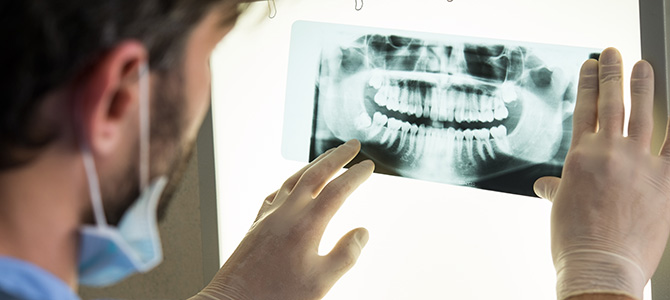
Dentists Can Be the First Line of Defense against Domestic Violence

The University of Arizona College of Medicine – Phoenix and Midwestern University have published an article to bring to light the important role dentists can play in identifying domestic violence victims.

“The overall purpose of the paper is to bring dentistry and its subspecialties into the conversation about traumatic brain injury (TBI), specifically in cases of domestic violence,” said Midwestern University dental student Timothy Ellis, lead author of the study.
“In our society, and others around the world, domestic violence is more common than many would suspect. Survivors recount ‘too many times to remember’ that they were abused and blacked out or were struck in the head. Thus, oral and facial trauma may be treated or identified by dentists and dental sub-specialists, opening another avenue for patients to gain access to proper care or needed assistance.”

“This is a societal need and we have to call on all health care providers and mandatory reporters to join the fight,” Lifshitz said. “This paper is creating additional touchpoints between victims and the health care delivery system. It is an opportunity for dentists to be early detectors who can refer those individuals for follow-up care.”
The oral biomarkers that could help dentists potentially identify domestic violence victims include tears, fractures, breaks and chips in the teeth and mouth that would be inconsistent with personal history and, therefore, raise the index of suspicion. Obvious signs of violence that may indicate brain injury include jaw or tooth fractures, trauma to nerves in the mouth and jaw, as well as damage to the nasal bone. Tooth discoloration, blunted roots and pulpal necrosis, which is the death of cells and tissues in the center of a tooth, also may be signs of a previous dental trauma warranting further investigation.
According to the publication, dentists receive little to no education about identifying and discussing domestic violence with potential victims, yet they may be the first and only health professional to evaluate a domestic violence victim.
“I have spoken with several dentists regarding the topic,” Ellis said. “Many find it interesting, however, they have little experience. The most common answer I receive is that they had just never thought about it or believed that such a case would be more likely to present in a medical facility and thus, it does not cross their mind when interacting with patients on a daily basis. That said, many dentists are intrigued by the topic and the response has been positive. It is interesting that very stringent protocols exist in pediatric dentistry, but a large gap exists when dealing with teens, young adults and adults in general.”

"All dentists should be educated on the identification of potential injuries sustained as a result of domestic violence,” she said. “As health care providers, we are already obligated to report suspected abuse. I do not feel that this will add an undue burden to dentists.”
Ellis said next steps may include collecting data from dentists to document oral biomarkers of injury. He continues these queries with the objective to help at least one patient and their situation.
The publication is one in a series on “Traumatic Brain Injury in Domestic Violence” to be published in the Journal of Aggression, Maltreatment, and Trauma, for which Dr. Lifshitz is a guest editor.
About the College
Founded in 2007, the University of Arizona College of Medicine – Phoenix inspires and trains exemplary physicians, scientists and leaders to advance its core missions in education, research, clinical care and service to communities across Arizona. The college’s strength lies in our collaborations and partnerships with clinical affiliates, community organizations and industry sponsors. With our primary affiliate, Banner Health, we are recognized as the premier academic medical center in Phoenix. As an anchor institution of the Phoenix Bioscience Core, the college is home to signature research programs in neurosciences, cardiopulmonary diseases, immunology, informatics and metabolism. These focus areas uniquely position us to drive biomedical research and bolster economic development in the region.
As an urban institution with strong roots in rural and tribal health, the college has graduated more than 1,000 physicians and matriculates 130 students each year. Greater than 60% of matriculating students are from Arizona and many continue training at our GME sponsored residency programs, ultimately pursuing local academic and community-based opportunities. While our traditional four-year program continues to thrive, we will launch our recently approved accelerated three-year medical student curriculum with exclusive focus on primary care. This program is designed to further enhance workforce retention needs across Arizona.
The college has embarked on our strategic plan for 2025 to 2030. Learn more.